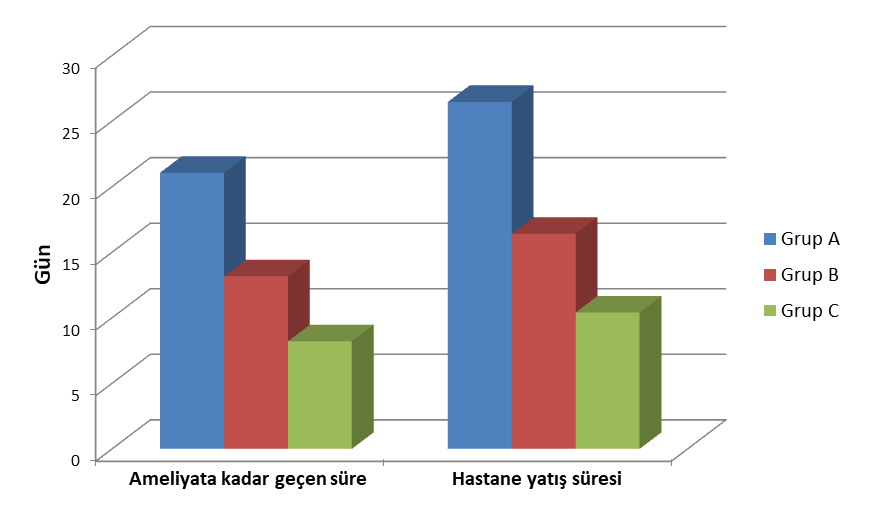Comparison of Normal Sponge Vacuum Assisted Closure, Silver Sponge Vacuum Assisted Closure and Conventional Wound Closure Methods in Infected Cavity Wounds
- Year : 2021
- Vol : 1
- No : 3
- Page : 79-84
ABSTRACT
Aim: The aim of this study is to evaluate the effects of normal sponge vacuum assisted closure, silver sponge vacuum assisted closure and conventional dressing methods on hospitalization time, wound healing and infection in patients with infected cavity wounds.
Patients and Method: Between February 2013 and February 2020, 153 patients with infected cavity wounds were included in the study. The patients were divided into three groups; Patients treated with conventional wound care were included in group A, patients treated with normal sponge negative pressure wound therapy (NPWT) were included in group B, and patients managed with silver sponge NPWT were included in group C. Demographic data of the patients (age, gender), the time from hospitalization to surgery, the number of positive cultures and hospital stay were recorded. Wound dimensions were compared over wound photographs uploaded to Digimizer Image Analysis Software.
Results: The number of reproduction was the lowest in the patients who underwent silver sponge NPWT (p< 0.05). In the patient group who underwent wound care with silver sponge NPWT (group C), the hospitalization period was the least (p< 0.05). The effects of sponge type on the wound diameter were not statistically significant between group B and group C (p>0.05).
Conclusion: In patients for whom negative pressure wound treatment is appropriate, silver sponge closure can be preferred, allowing patients to get rid of the bacterial load in a shorter time and return to their normal lives sooner.
Key words: Infected cavity wound, negative pressure wound therapy, vacuum assisted closure with silver sponge.
Email : [email protected]
Cite this Article As : İnce B, Zuhour M, Ismayilzade M. Kaviteli Enfekte Yaralarda Normal Süngerli Vakum Yardımlı Kapama, Gümüşlü Süngerli Vakum Yardımlı Kapama ve Konvansiyonel Yara Kapama Yöntemlerinin Karşılaştırılması. Mev Med Sci. 2021;1(3): 79-84
Description : Yazarların hiçbiri, bu makalede bahsedilen herhangi bir ürün, aygıt veya ilaç ile ilgili maddi çıkar ilişkisine sahip değildir. Araştırma, herhangi bir dış organizasyon tarafından desteklenmedi.Yazarlar çalışmanın birincil verilerine tam erişim izni vermek ve derginin talep ettiği takdirde verileri incelemesine izin vermeyi kabul etmektedirler. None of the authors, any product mentioned in this article, does not have a material interest in the device or drug. Research, not supported by any external organization. grant full access to the primary data and, if requested by the magazine they agree to allow the examination of data.
2021, Vol. 1 (3)
ISSN: 2757-976X ;
E-ISSN: 2757-976X ;

